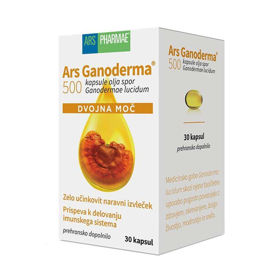Customer question:
Can groin pain also indicate cancer? Anonymous customer's question
Pharmacist's answer:
Groin pain can be the result of a wide variety of causes that are not necessarily related to cancer. Common causes include muscle strains or injuries, hernias, inflamed lymph nodes, urinary tract infections, kidney stones, and joint problems such as hip osteoarthritis. In men, testicular problems such as testicular torsion or varicocele are also possible causes. Women may experience groin pain due to ovarian cysts, endometriosis, or pelvic inflammatory disease.
Cancer is a less common cause of groin pain, but it cannot be completely ruled out. Different types of cancer can cause pain in this area, including testicular cancer, prostate cancer, lymphoma, and bladder cancer. Symptoms that could indicate cancer include persistent and unexplained pain, palpable masses or swelling in the groin area, unexplained weight loss, night sweats, and general malaise.
If groin pain persists for a long time or worsens, seeing a doctor for an accurate diagnosis and appropriate treatment is essential. Your doctor will likely perform a physical exam, take a medical history, and possibly order additional tests, such as blood tests, ultrasound, MRI, or CT scan, depending on the suspected underlying cause of the pain. Based on the results of these tests, he can determine an appropriate treatment plan, which may include physiotherapy, medication, lifestyle changes, or surgery if necessary.
What causes groin pain?
Groin pain can be caused by several factors, ranging from less severe to more severe health problems. One of the most common causes is muscle strain or injury, often associated with physical activity or sports. Hernias, especially inguinal hernias, are also a common cause of groin pain, as part of the intestine or fatty tissue from the abdominal cavity pushes through a weak point in the abdominal wall. Swollen lymph nodes, which can occur due to infections or other inflammatory conditions, can cause pain and discomfort in the groin area.
Urinary tract infections and kidney stones are also common causes of groin pain. In men, testicular problems such as testicular torsion, epididymitis, or varicocele can cause pain in this area. In women, ovarian cysts, endometriosis, or pelvic inflammatory disease are possible causes. Orthopedic problems such as hip osteoarthritis, bursitis, or hip injuries can cause pain that radiates to the groin.
Rarely groin pain can be associated with cancer, such as testicular cancer, prostate cancer, lymphoma, or bladder cancer. Such cases are usually associated with additional symptoms such as palpable masses, unexplained weight loss, night sweats, or general malaise. Although cancer is a less common cause, it cannot be completely ruled out, especially if the pain persists or worsens.
Arthritis and other degenerative joint diseases can cause groin pain, especially in older adults. Spinal problems, such as a herniated disc or sciatica, can cause pain that radiates into the groin. In some people, the pain may be due to nerve compression, which causes neuropathic pain.
An accurate diagnosis often requires a thorough medical evaluation, including a history, physical exam, and sometimes additional tests such as blood tests, ultrasound, MRI, or CT scan. Treatment for groin pain depends on the underlying cause. It may include physiotherapy, pain relievers, antibiotic treatment for an infection, or surgery for more severe conditions such as hernias or cancer.
What are the symptoms of groin cancer?
Cancer itself does not originate in the groin, but different types of cancer can spread to this area or cause groin pain due to the involvement of nearby organs and tissues. Here are some symptoms that could indicate the presence of cancer in the groin or the area affecting the groin:
- A palpable mass or swelling: One of the most common signs is a palpable mass or swelling in the groin, which may indicate enlarged lymph nodes or tumors.
- Persistent pain or discomfort: Groin pain that does not go away or improve with conventional treatment may indicate a more severe problem.
- Unexplained weight loss: Unexpected weight loss for no apparent reason is often a sign that something unusual is going on in the body.
- Night sweats: Intense night sweats can be associated with various types of cancer, including lymphomas.
- Fatigue and weakness: Prolonged fatigue and general malaise can be non-specific signs of cancer.
- Changes in urine or bowel habits: Cancer of organs such as the bladder, prostate, or kidneys can cause changes in mining or mud.
- Problems with fertility or sexual function: In men, testicular or prostate cancer can affect fertility and sexual function.
- Enlarged lymph nodes: Enlarged and painless lymph nodes in the groin can be a sign of lymphoma or other types of cancer that spread through the lymphatic system.
- Skin changes: Skin cancer, such as melanoma, can appear in or near the groin area and may look like an unusual growth or sore that won't heal.
Can cancer spread to the groin?
Yes, cancer can spread to the groin. The process by which cancer cells spread from the primary tumor to nearby lymph nodes or distant organs is called metastasis. Extension to the groin is familiar with some types of cancer, especially cancer located near the area or affecting organs and tissues in the groin. For example, testicular cancer, which is the most common cancer in men, can spread to lymph nodes in the groin. If the lymph nodes are affected, there may be swelling, pain, or discomfort in the groin. Similarly, bladder cancer can spread to lymph nodes near the bladder, including those in the groin. Prostate cancer, which is common in men, can spread to nearby lymph nodes, including inguinal lymph nodes.
In women, cervical cancer can spread to the lymph nodes in the groin, as these lymph nodes are part of the lymphatic system that passes from the uterus and vagina. Ovarian cancer can spread to the inguinal lymph nodes, although this process is often later and more advanced. In addition, cancer that starts in other parts of the body can spread to the groin via the lymphatic system or bloodstream. For example, breast cancer often spreads to the inguinal lymph nodes via the lymphatic channels that connect the breast to the groin. When cancer spreads to the groin, it can cause a variety of symptoms, such as swelling, pain, discomfort, or a feeling of heaviness in the groin. These symptoms may indicate the progression of the disease and require further investigations and treatment.
Cancer treatment that has spread to the groin depends on the type of cancer, its extent, and the stage of progression. This may involve a combination of surgical removal of the tumor, chemotherapy, radiotherapy, and targeted therapy. Early detection and treatment of metastatic cancer can improve the treatment outcome and the patient's quality of life.
Interesting reading: Sentjanzevka use
Interesting reading: Burning pain in the lumbar back













